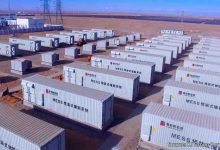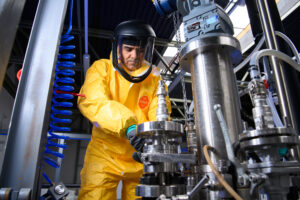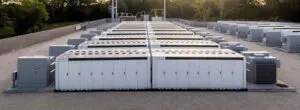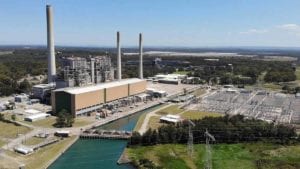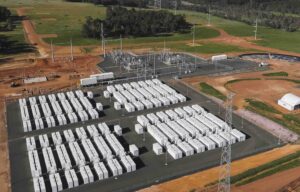Origin Energy expects the capacity of renewable energy in Australia to double over the next three years, through a mix of large-scale plants and rooftop solar, and is looking at multiple options for big batteries around the grid.
“We see the energy markets rapidly accelerating into a de-carbonised world,” CEO Frank Calabria told an analysts briefing on Wednesday after the company delivered a hefty first half underlying pre-tax profit of $1.74 billion
The big change in the coming year will be the connection of a host of new large-scale wind and solar farms, mostly to meet the federal renewable energy target but also in response to corporate demand for cheaper power.
Origin itself expects to bring on line another 243MW of large-scale wind and solar in the current half, and in 2020 another 530MW of large-scale wind capacity – the Stockyard Hill wind farm in Victoria, which it confirmed was priced in “low $50/MWh” price range.
This represents a discount to current wholesale prices of nearly 50 per cent and implies zero subsidy for the new wind investment. In fact, it suggests a negative subsidy, as some market analysts have noted in recent times.
Origin, like all other major retailers, is also dealing with an accelerating consumer shift to rooftop solar, that will also quickly embrace batteries and EVs as the price of those investments come down, and incentives are rolled out.
Origin’s forecasts over the next three years suggest the recent boom in rooftop solar uptake will continue to accelerate.
Origin, which revealed a $28 million reduction in its energy division profits as a result of lower demand – mostly through the increased uptake of rooftop solar – has argued for an early end to rooftop solar subsidies, but the politicians are not buying it, despite attempts by the Murdoch media to grossly exaggerate their costs.
 Origin says it has installed 24MW of rooftop solar in the first six months of the year – mostly to residential customers – and is keen to help its consumers manage the transition to a “decentralised and digitised world.”
Origin says it has installed 24MW of rooftop solar in the first six months of the year – mostly to residential customers – and is keen to help its consumers manage the transition to a “decentralised and digitised world.”
How to do that and maintains profit growth is the challenge to it, and all utilities.
Apart from the $28 million hit from lower demand, Origin reveals that the pressure to lower retail prices, and increased competition, cost it $111 million in the first half. It recovered much of that by belting large customers with an extra $85 million as contracts were renegotiated.
Overall, Origin’s profits from the electricity market were down 7 per cent, but it dramatically increased returns from wholesale gas markets (gas generation was down as more renewables came into the grid, so it sold more to other gas customers) and from its LNG operations.
That enabled the company to resume dividends for the first time in years, declaring a 10c fully franked payout in the first half, and hoping to do the same in the second half.
 Intriguingly, Origin – which is building a 4MW/4MWh battery at its Mt Stuart peaking plant in Queensland, the first on Australia’s main grid to be paired with a fossil fuel plant – also pointed to the possibilities of at least two other big batteries scattered around the grid.
Intriguingly, Origin – which is building a 4MW/4MWh battery at its Mt Stuart peaking plant in Queensland, the first on Australia’s main grid to be paired with a fossil fuel plant – also pointed to the possibilities of at least two other big batteries scattered around the grid.
It pointed to a potential battery near the Mortlake gas-fired generator in Victoria, and adjacent to the Eraring coal-fired generator in NSW – its major generation unit and its only coal asset.
Origin is also looking at expanding pumped hydro capacity and storage at its Shoalhaven operations in NSW. Energy markets chief Greg Jarvis talked about this option in a recent Energy Insiders podcast.
It is also committed to installing more than 100MW of “fast-start” gas generators to deal with the increase in renewables and the shift to 5-minute settlement periods, and may commit to more.
Calabria said markets remained volatile, a clear sign of the transition that is taking place and the lack of any clear federal policy on either energy or climate change.

